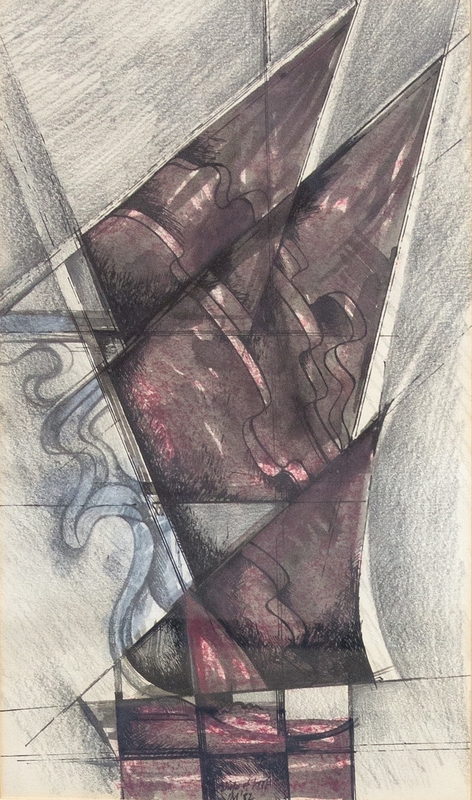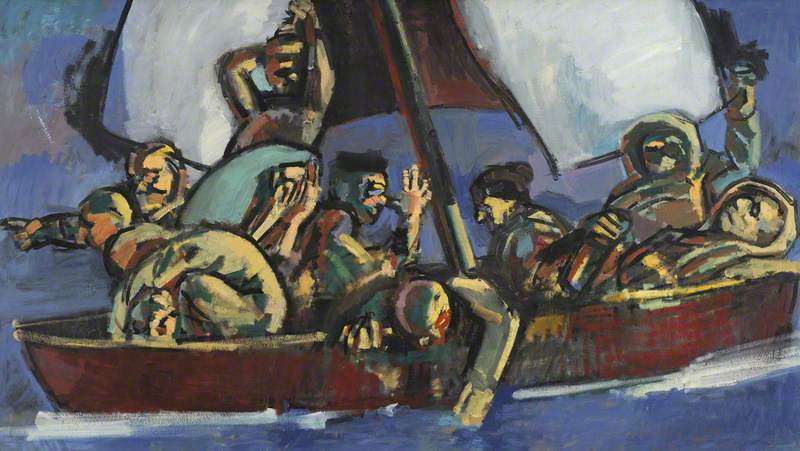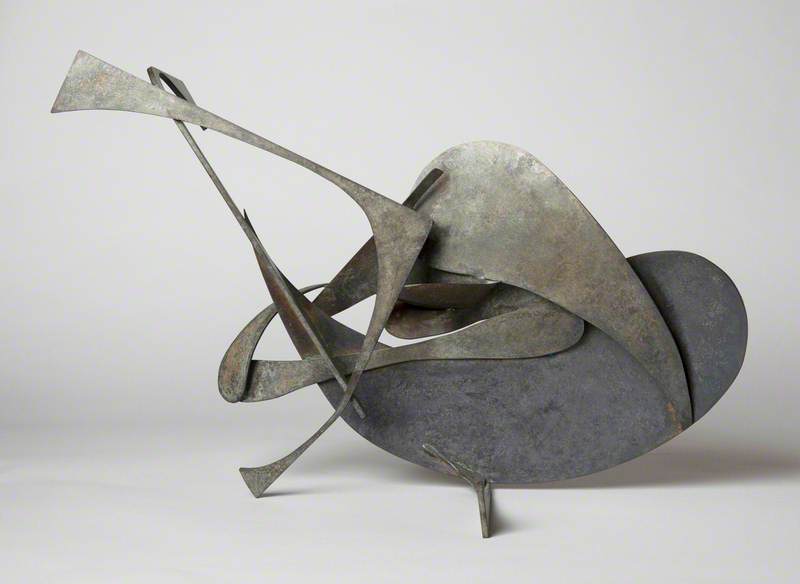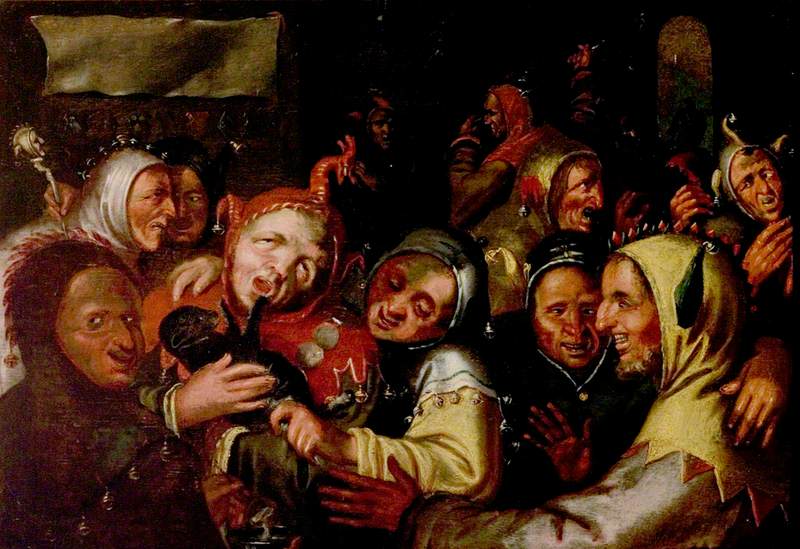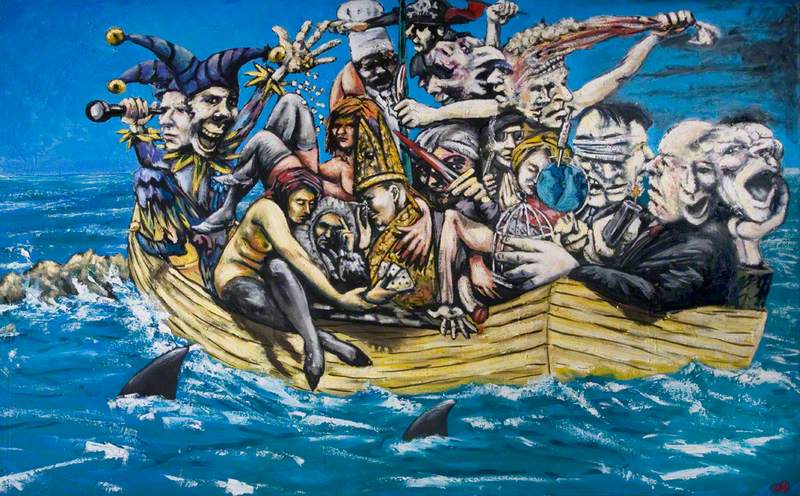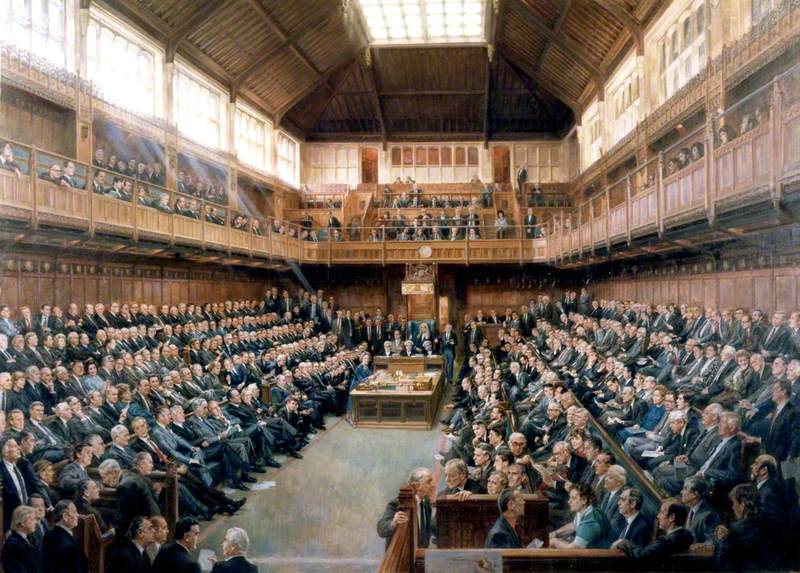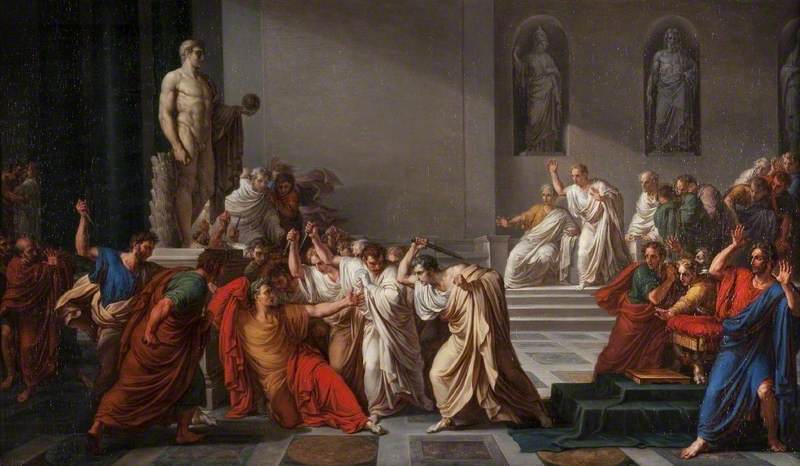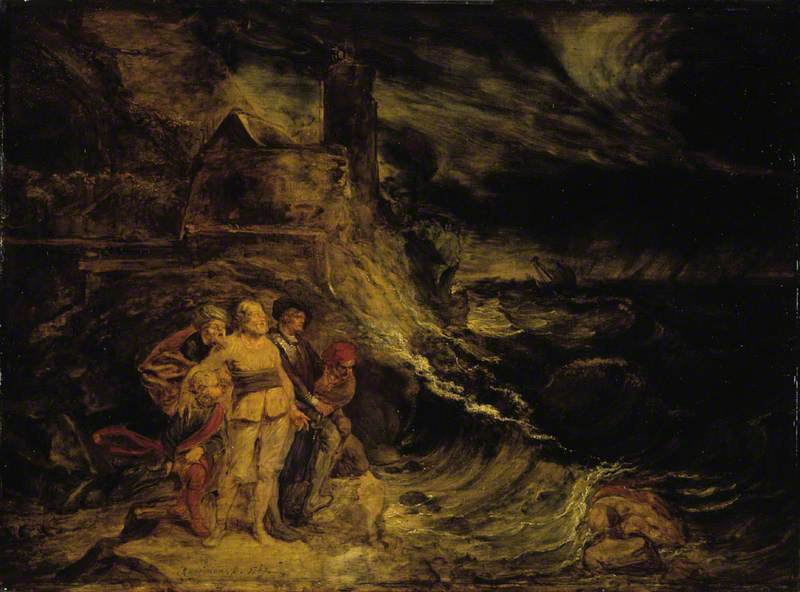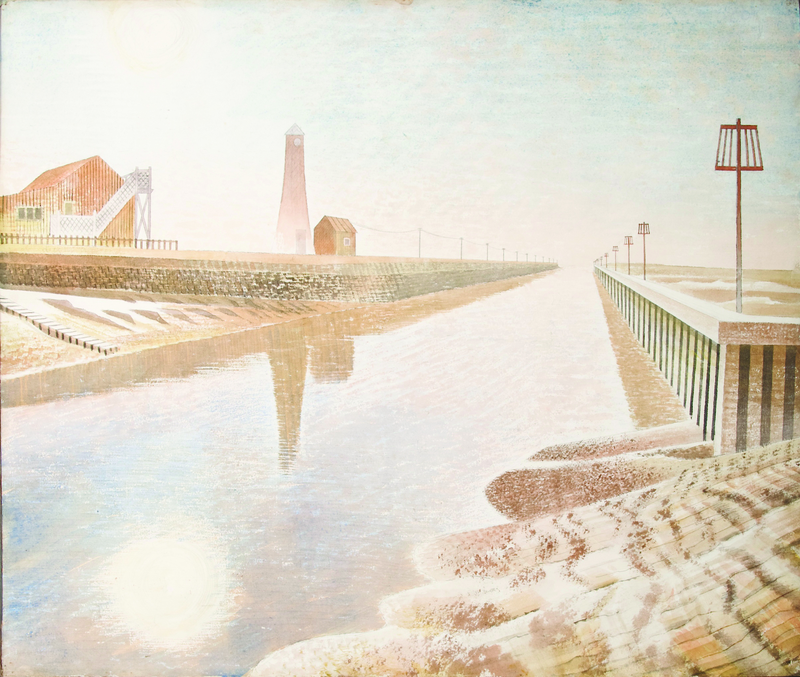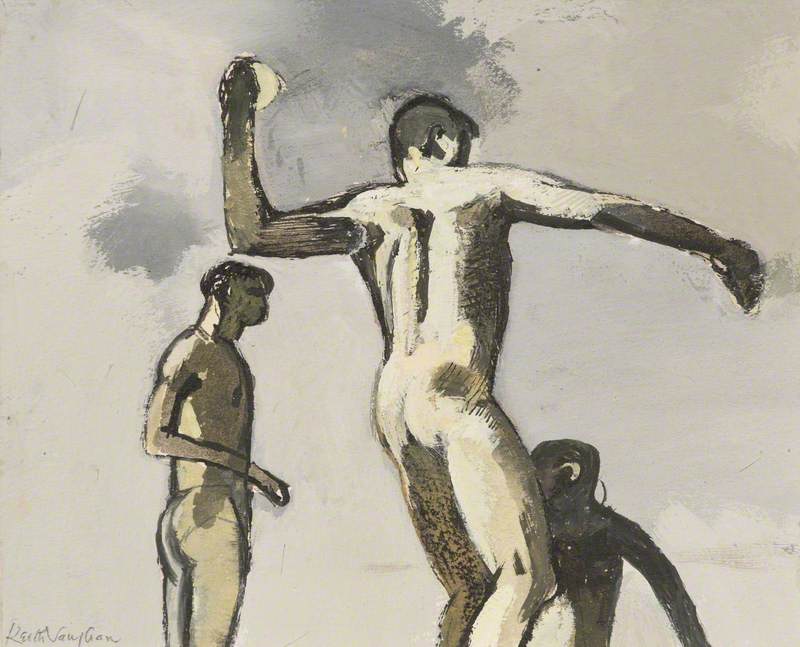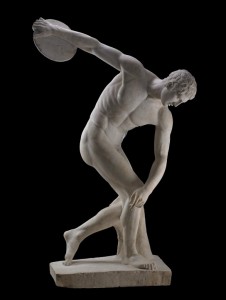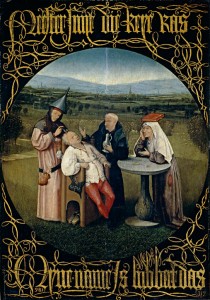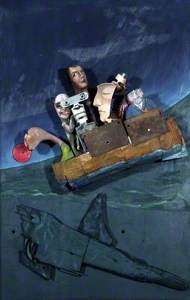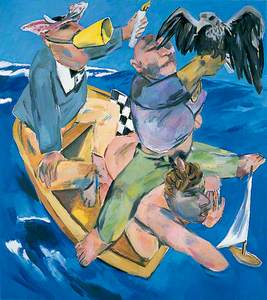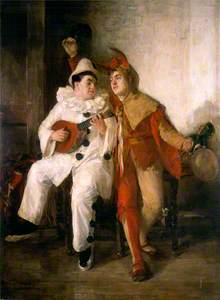'The fool doth think he is wise, but the wise man knows himself to be a fool.' – from As You Like It by William Shakespeare
This early eighteenth-century Fool from the Marseille tarot deck is travelling light in his jester-like costume with just a small package of provisions.
The Fool from 'Tarot of Marseilles'
1701–1715, designed by Jean Dodal 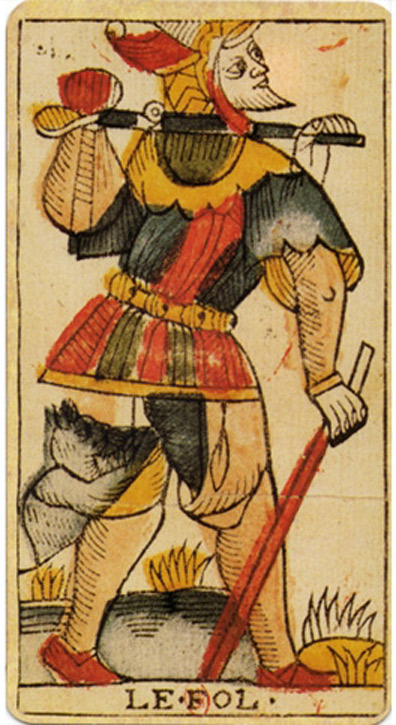
Fools are often portrayed in the middle of a journey, and they often seem unconcerned about what fate has in store. Most of us would like to live carefree lives, but in a world full of grown-up responsibilities this is usually impossible.
Allegory of Drink: Effects of Intemperance
(verso) c.1801–1825
British School 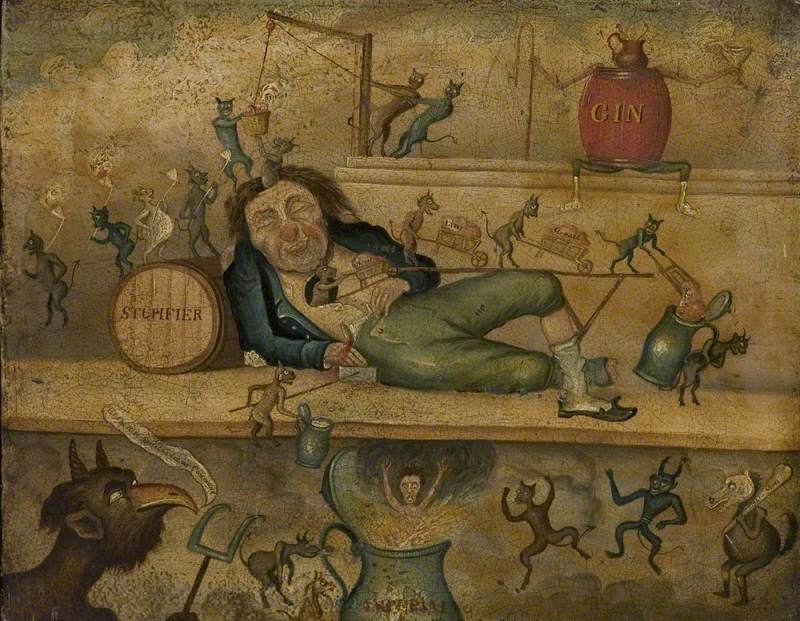
Sometimes the fool is someone who shirks responsibility out of ignorance, greed, or because they are distracted by worldly pleasures. This kind of fool neglects to guard their provisions wisely, living only for the present moment. But in particular situations, the fool can be assured that their art, wit and social skills are needed and that they will be provided for accordingly.
Medieval courts often employed a jester, whose role was to entertain nobility and provide an outlet for social tensions. Otherwise tempers could no doubt escalate quickly given the close-knit confines of palace life. A good jester would presumably know how to handle inflammatory temperaments, using pin sharp wit to deflate the situation.
Peter Upcher as Feste in 'Twelfth Night' at Tenby, 1951
1951
Janet Allen 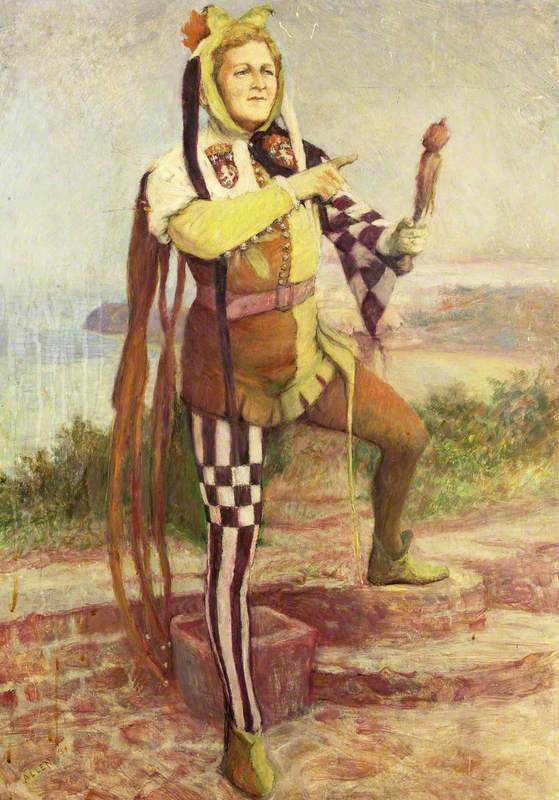
At the moment NASA is looking to hire 'jokers' for a two-year mission travelling to Mars. Keeping morale high and pulling everyone together in times of crisis will be required skills for astronauts hoping to be recruited to this newly created role. The boredom and physical discomfort that the astronauts will have to endure while being cooped up with their colleagues on this mission is likely to rival even the dullest of courts. They will, however, be able to look back at the earth as it recedes into a tiny speck floating in the black sea of space, and wonder what might become of human civilisation.
The Fool, Self Portrait, Stratford
(from 'King Lear') 1982
Antony Sher (1949–2021) 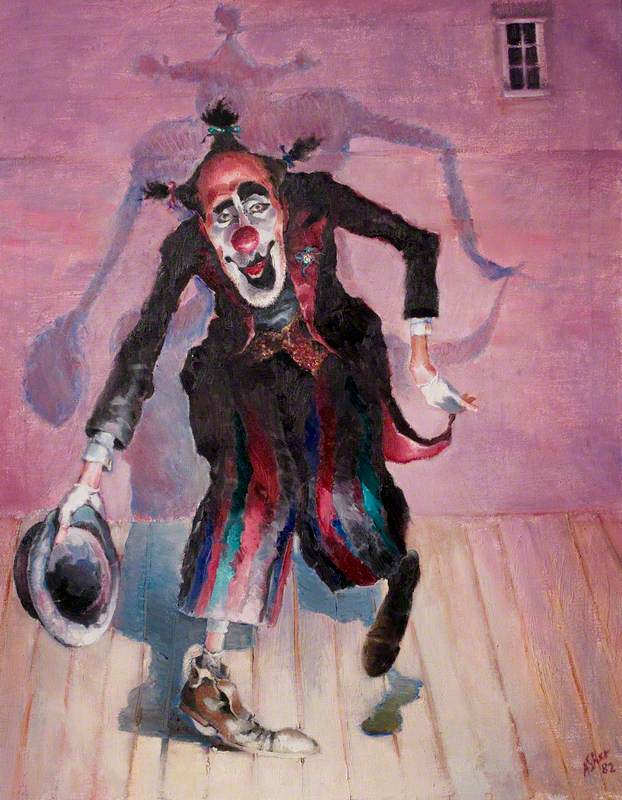
Since fools aren't usually taken seriously, they're often able to traverse the social order with impunity. Sometimes they have valuable observations to offer, even if theirs is a lone voice in the wilderness. This self portrait by the great actor Sir Antony Sher is of him playing the part of the fool from Shakespeare's King Lear. Artists sometimes see themselves as observers looking in from the edge of society, and some of what these artists observe can seem crazy enough that it leads them to question mainstream values.
The metaphor of the 'ship of fools' first appears in Plato's Republic. Written in ancient Greece around 380 BC, it discusses the nature of justice and addresses a range of models for how a just city-state might be organised. Having witnessed the rise and fall of a succession of political elites, Plato chose to distance himself from partisan politics, and to consider the merits and flaws of a range of hypothetical models of governance instead.
Plato had good cause to keep his distance. In 399 BC his aged friend and fellow philosopher Socrates had been condemned by a jury of Athenian citizens and sentenced to death by poison. In his trial, Socrates had argued that Athenian democracy needed critical voices such as his, but his plea fell on deaf ears. Perhaps the men of Athens didn't like to be told what was good for them in such serious tones.
One of the occupants of this particular ship of fools is launching a tiny boat from the larger vessel. He is totally absorbed in his tinkering with his model and doesn't seem to notice that a heavy looking man is riding on his back.
In Plato's allegory, the captain of the ship has physical stamina, but is a little blind, and not very adept at navigation. Before long chaos breaks out under his weak leadership: 'Every one is of opinion that he has a right to steer, though he has never learned the art of navigation and cannot tell who taught him or when he learned, and will further assert that it cannot be taught, and they are ready to cut in pieces any one who says the contrary.'
One of Plato's specific concerns about democracy was that the populism of democratic government leads to mob rule fuelled by fear.
This is a woodcut frontispiece from a 1549 edition of The Ship of Fools written in German verse by Sebastian Brant and first published in 1494.
Title page from Sebastian Brant's satire 'Der Narrenspiegel, das gros Narrenschiff' (Ship of Fools)
1549, woodcut by unknown artist 
This Renaissance remake pokes fun at a vulgar and coarse populace, ridiculing their superstitious preoccupations. Whether it was intended as a humanist work is still under debate, but at the time the subject proved to be a blockbuster hit with many more editions being printed to satisfy demand.
Within thirty years of its initial publication, the Reformation would begin sweeping across Europe, and the ship of fools was an allegory that was often picked up and repeated by artists. One of the more notable versions was by Hieronymus Bosch, who painted members of the clergy drinking wine, eating cake and generally frolicking aboard a becalmed vessel.
Au Louvre !
— Musée du Louvre (@MuseeLouvre) November 10, 2020
Have you ever watched closely "The Ship of Fools" of Bosch?
The theme recalls the poem "The Ship of Fools" (1494) by the German author Sebastien Brant, which is a satire on human society.#LouvreChezVous #MuseumFromHome pic.twitter.com/DRfSAAkh3Y
Bosch's painting was commissioned as part of an altar panel. Perhaps this particular church was keen to look as though they were doing a lot of soul-searching on the subject of gluttony.
This ship of fools shows a motley crew of satirised characters, including a Janus-faced jester on the lookout, a gambling bishop and a suited businessman holding a stick of dynamite in the stern.
All sorts of lewd and gluttonous behaviour is going on while the craft drifts closer to a rocky reef.
History is peppered with scenarios in which human civility has truly broken down. In June 1816 the French frigate Méduse drifted off course due to poor navigation and ran aground on a sandbank. The ship's senior crew took to the lifeboats, leaving 146 people to be piled onto a makeshift raft.
Desperate and drifting on the open sea, the raft's occupants lost what little water they had while fighting, ate those who had already died and killed off the weakest who remained. In an era in which people were supposed to have a stiff upper lip, this horrifying event shocked civilised society to the core.
The Raft of the Medusa
(copy after Théodore Géricault) 1955
Renato Guttuso (1912–1987) 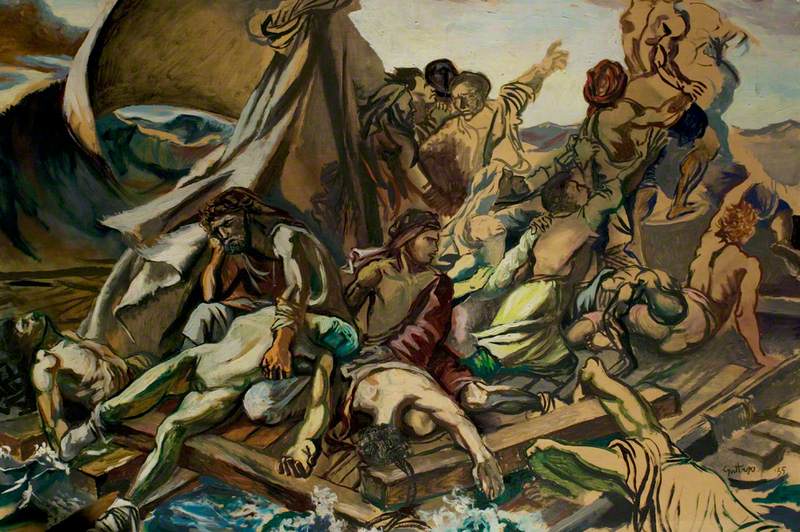
The Raft of the Medusa by Théodore Géricault (of which this painting is a twentieth-century copy) provides a particularly twisted and visceral view of human folly. Artists have also borrowed from this archetypal image of civilised values breaking down many times since. Banksy graffiti depicting the raft of the Medusa appeared briefly on a wall in Calais, though it was later painted over.
Today the work is likely to evoke images of refugees crossing the Mediterranean on packed, barely seaworthy ships. Sometimes this humanitarian crisis is framed as a collapse of civilised values on a global scale, but sometimes it is portrayed much like the ship of fools; opportunistic migrants seeking a more lucrative way of life.
For as long as democracy has been upheld as a comparatively just form of governance, the ship of fools has helped people articulate their incredulity and to make light of their fears during times of political turmoil. Usually, the ship of fools doesn't have a rudder, but looking at who is aboard often indicates which direction politics will travel in next.
Jessica Ramm, artist and writer
